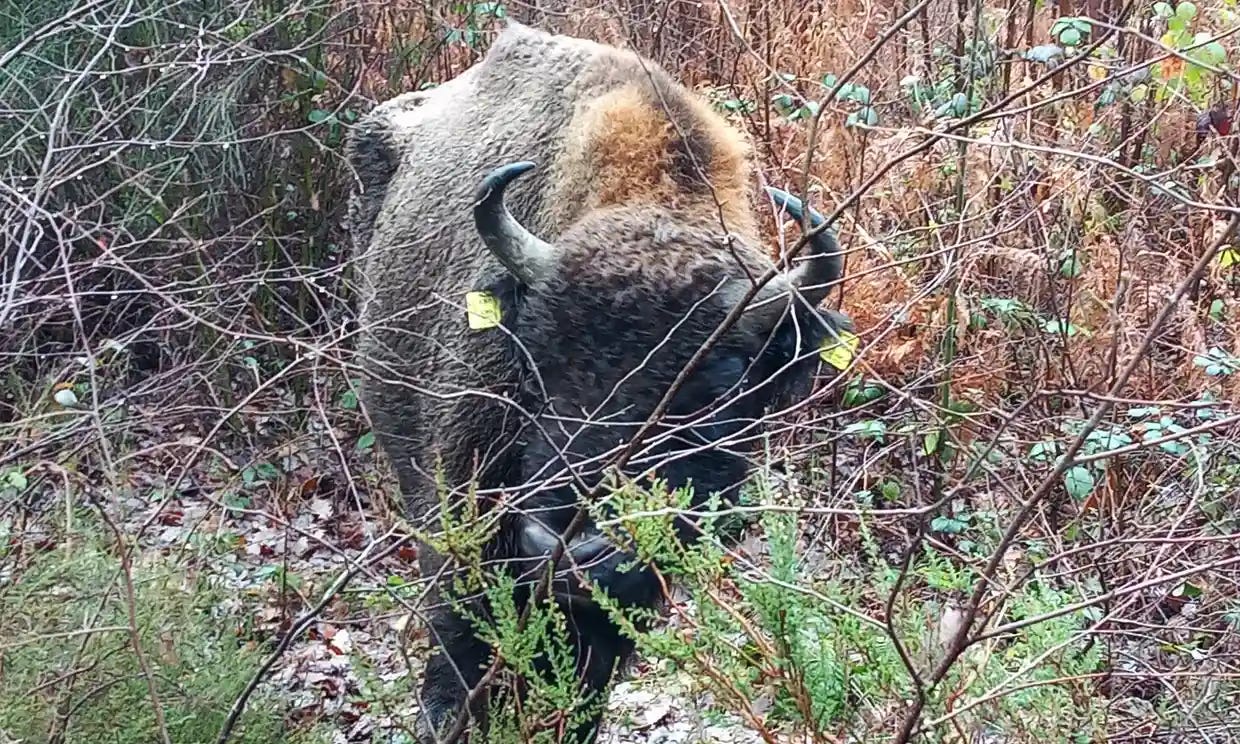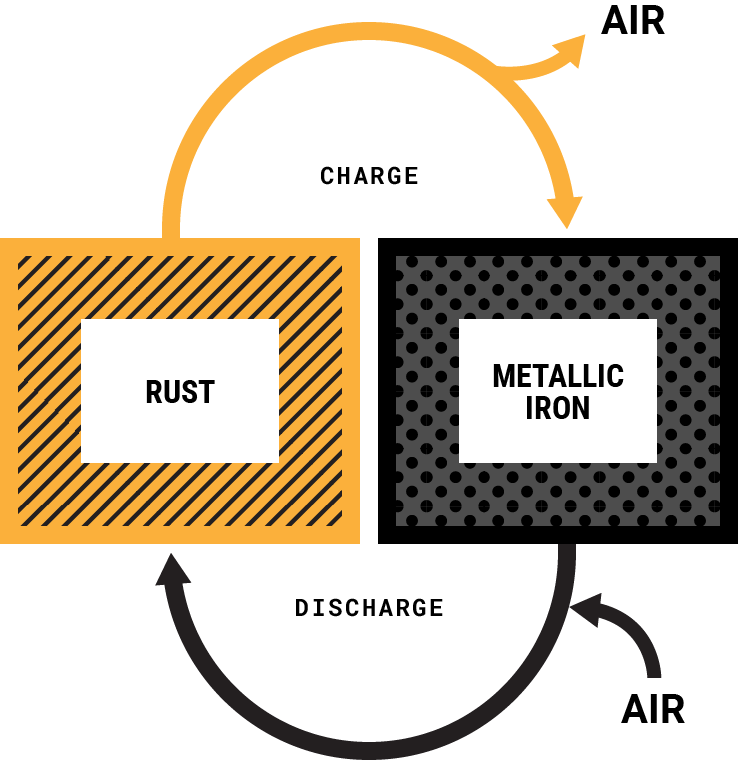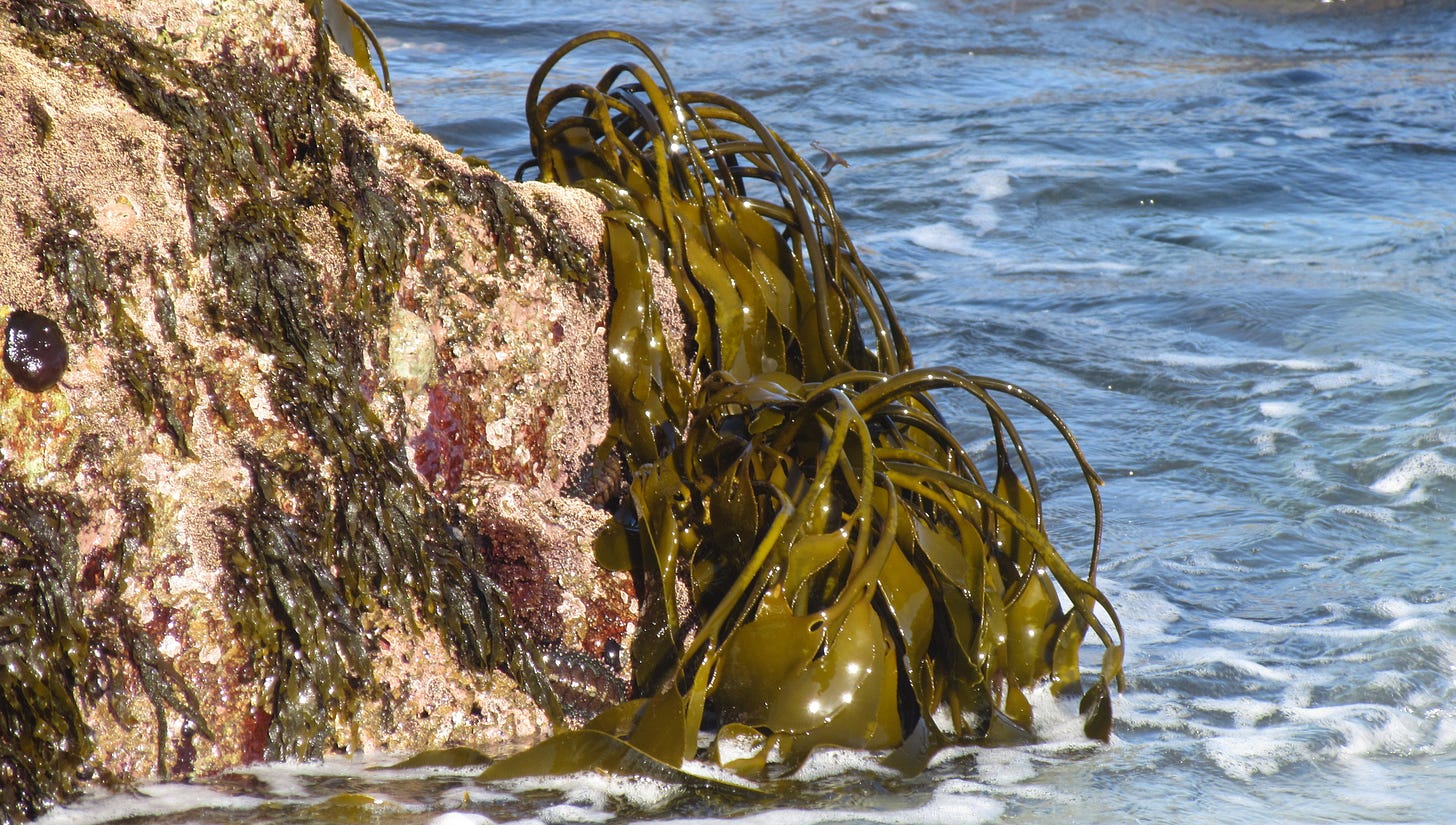The Weekly Anthropocene, January 4 2023
Dispatches from the Wild, Weird World of Humanity and its Biosphere
Wildlife
In 2022, Britain got its first wild bison herd for thousands of years, with the original three females released in Kent in July joined by a surprise calf birth in September (as this newsletter has previously reported). On December 23, 2022, a bull bison from Germany was released to join them, making the herd a full breeding population. This is an awesome example of Anthropocene rewilding!
The eastern quoll, a cat-like marsupial, was declared extinct on mainland Australia in 1963, surviving only on Tasmania, where their population continues to decline. Pioneering rewilding group Aussie Ark started a captive breeding program and in 2017 released nine eastern quolls into their fenced, fox-proof Barrington Wildlife Sanctuary1 in New South Wales. Now, over 250 eastern quolls have been reintroduced or naturally born there, and the program continues to advance! A record 63 newborn quoll joeys were found in November 2022 (that’s spring in Australia) and 10 more Tasmanian quolls were reintroduced in late December. Another great rewilding initiative!
In and around Houston, Texas in late December 2022, local volunteers rescued 1,544 Mexican free-tailed bats when several local bat colonies were struck by hypothermic shock2 and fell to the ground en masse. Most of the bats could be revived with little more than heat and hydration, and over 700 have already been released back into the urban wild. This is a really heartwarming example of humans saving their wild kindred from climate change-induced variability, akin to several other Anthropocene-era efforts such as the project to give koalas extra drinking water stations during heat waves. Such work always makes this writer think of the potentially apocryphal St. Francis of Assisi quote, “Not to hurt our humble brethren [animals] is our first duty to them, but to stop there is not enough. We have a higher mission: to be of service to them whenever they require it." In the brave new world of the Anthropocene, perhaps humanity can grow to become an “elder sibling” to many wild creatures, helping protect them from events outside their control.
United States
In yet another awesome new clean energy manufacturing project catalyzed by the Inflation Reduction Act (we’re up to at least 23 now!), the startup Form Energy has announced that they’re building a factory for their pioneering new iron-air batteries in Weirton, West Virginia, which should begin operations in 2024. This is really cool for a number of reasons. For a start, this is a great example of the emerging “Rust Belt to Battery Belt” transition: Weirton has struggled since losing its steel industry, but the new Form Energy factory will create 750 jobs and invest $760 million in the community. Also, iron-air batteries are a really cool new technology that haven’t made it to commercial grid-scale storage uses yet, but have incredible potential; using “reversible rusting” to store energy for competitively long periods using cheap, nontoxic, readily available materials. This will be the first factory to build them at a commercial scale. Great news!
Thanks to Inflation Reduction Act funding, the U.S. Postal Service has announced that it will acquire and use at least 66,000 battery electric vehicles by 2028, replacing a substantial chunk of its aging fleet of over 220,000 vehicles. American readers, look out for electric mail trucks near you later this decade!
On December 20, 2022, the U.S. Environmental Protection Agency finalized the first new emissions standards for heavy-duty vehicles in over 20 years. Starting with 2027 model year vehicles, manufacturers will be obliged to use new technology that reduces nitrogen dioxide emissions when driving at low speeds or idling. The EPA estimates that this will reduce heavy-duty vehicle NO2 emissions 48% by 2045, preventing up to 2,900 premature deaths and 18,000 cases of childhood asthma. And this is just the first step in the EPA’s new Clean Trucks Plan; look out for more progress in the coming months!
“This is just the first action under EPA’s Clean Trucks Plan to pave the way toward a zero-emission future. These rigorous standards, coupled with historic investments from the Inflation Reduction Act and the Bipartisan Infrastructure Law, will accelerate President Biden’s ambitious agenda to overhaul the nation’s trucking fleet, deliver cleaner air, and protect people and the planet.”
-EPA Administrator Michael S. Regan.
The North Sea

As The Economist recently mapped and discussed, the North Sea is becoming a major renewable energy hub. North Sea countries added almost 4 gigawatts (4 GW=4,000 megawatts) of new offshore wind power and auctioned off plots for 25 GW of future offshore wind power in 2022 (a record, by far). They expect yearly new offshore wind to grow to 10 GW before 2030 and in September 2022 agreed to set a target of reaching 260 GW of offshore wind capacity by 2050. (More speculative renewables-associated projects, from carbon capture to hydrogen electrolyzers3, are also attracting substantial investment in the North Sea area, and several “energy islands” bringing multiple offshore wind and hydrogen projects together are being planned).
What’s underway here is nothing less than the creation of a new power center in the world’s energy geography. 260 GW is an insanely large amount of energy, and will require over 24,000 new large wind turbines, considerably more than the world’s current total. For comparison, in 2021 the entire United States had under 1,200 GW of electrical generating capacity, including everything from coal plants to rooftop solar. Yet given Europe’s ongoing strong government and private-sector support for offshore wind, this ambitious goal seems quite likely to be met! Spectacular news.
Brown Algae
A new study from Germany’s Max Planck Institute for Marine Microbiology deepened humanity’s understanding of the carbon sequestering properties of brown algae (class Phaeophyceae), a family of major seaweeds (including kelp, bladderwrack, and rockweed) that is widespread throughout Earth’s oceans. The researchers found that brown algae is excellent at sequestering carbon thanks to its production of fucoidan, a complex long-chain polysaccharide that makes up a lot of seaweeds’ slimy coating. Fucoidan is a tough, “recalcitrant” molecule; it’s hard to chemically break down and no organism appears to have evolved to eat much of it. This unpalatability means that fucoidan “locks up” lots of carbon within itself for a long time, keeping it out of the atmosphere for hundreds of years.
That’s good to know, because not all carbon sequestration is created equal: trees sequester carbon very well, but they also release lots of it when they’re burned or cut down. Fucoidan appears to be a long-term “safe deposit box” for atmospheric carbon: there aren’t many processes messing with an inedible slime molecule in the ocean. Calculating based on the researchers’ new results, it appears that Earth’s brown algae sequesters in its fucoidan the equivalent of 0.55 gigatons of carbon dioxide per year. That’s quite a lot of carbon; for comparison, the human-created annual greenhouse gas emissions for all of New York State in 2020 amounted to 344.85 million tons of carbon dioxide equivalent, or roughly 0.34 gigatons.
It appears that brown algae slime is an underappreciated component of marine ecosystems’ carbon sequestration, helping slow down climate change every day and locking in its stored carbon in a secure, long-term way. This has interesting implications for the importance of protecting these species in their natural habitats, and for the value of nascent efforts to grow more brown algae ourselves. Fascinating news!
Counterintuitively, the unusually cold Texas weather that caused this seems to be due to climate change, as warming Arctic air occasionally pushes bits of the cold “polar vortex” jet stream south into the continental US. This particular mechanism is still an active and complex area of research: here’s a more in-depth explanation from Yale Climate Connections.
A controversial attempt to store renewable electricity: electrolyzers split water (H2O) into hydrogen and oxygen. The hydrogen can then be transported and burned to create energy later. It’s controversial because it’s been pushed by fossil fuel interests as an attempt to provide a second life for key fossil fuel assets (pipelines, container ships, etc.) by filling them with hydrogen instead of oil and gas, even though this may not be an efficient or market-competitive way of moving energy around. This writer’s informed opinion: modern grid-scale batteries are much better and will dominate the global energy storage market, but hydrogen might help in some places on the margins.







Another great issue! It's lovely to be shown by these exanples that there might be hope for us yet. Reading your newsletter,one learns that not only are humans ingenious in adapting to adverse conditions, but we are also often compassionate toward other species. The latter is the most heart warming for me. Keep these coming!